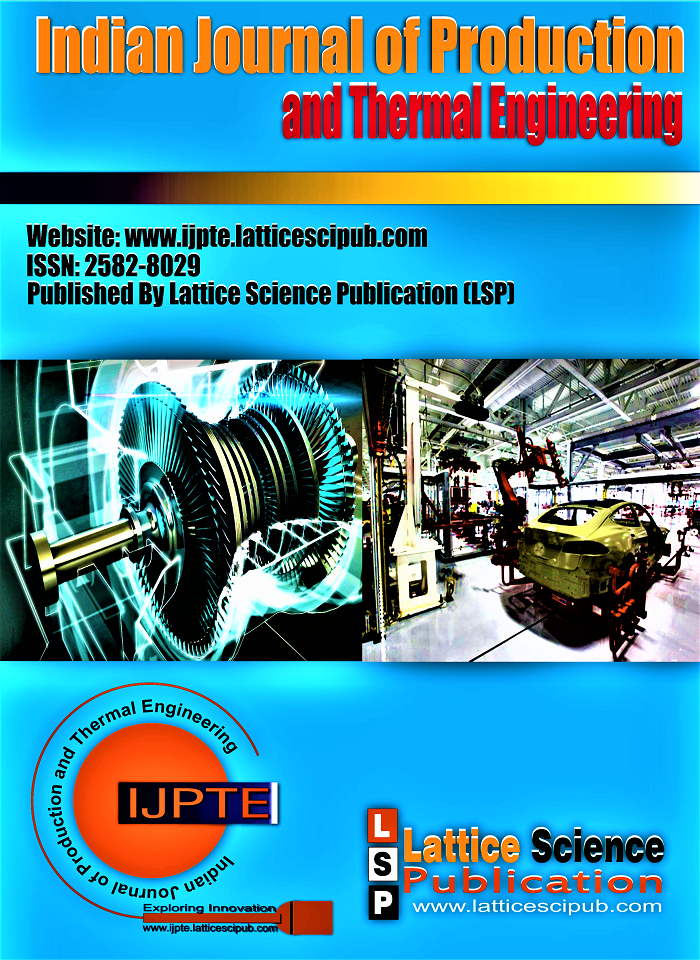Development and Calibration of Automated Multiple-Ring Infiltrometer
Main Article Content
Abstract
An automatic triple-ring infiltrometer was developed using a set of pre-set sensors and transducer (AP 403, AP 404, AP 405 and AP 406, RAP001 and RAP002). The aluminum probe sensors were graduated and arranged in series to monitor the rate at which water is infiltrating into the soil layer. The working principle of automatic triple-ring infiltrometer was developed using six probes with depth calibration of 1.0mm, 26.7 mm, 12.4 mm, and 12.7 mm, respectively. The result obtained showed strong agreement with a coefficient of determination R2= 0.963, indicating positive proportionality between cumulative infiltration and time taken for the water to infiltrate at different depths. The instrument has a measuring accuracy of ± 0.3mm infiltration depth. The device works effectively under biochar amended soil and other soil formations with high precision. Accurate infiltration data generated by the instrument would be applied to estimate the depth of water available to plant and predict possible agricultural drought.
Downloads
Article Details

This work is licensed under a Creative Commons Attribution-NonCommercial-NoDerivatives 4.0 International License.
How to Cite
References
Bouwer, H. (1986). Intake rate: cylinder infiltrometer. Pp. 825-844 in Klute A (Ed.). Methods of Soil Analysis, Part 1: Physical and Mineralogical Methods, 2nd Ed. Madison: American Society of Agronomy and Soil Science Society of America. 1188 p. ISBN 0-89118-088-5.
Cuenca, R. H. (1989). Irrigation System Design - An Engineering Approach. Prentice-Hall, Inc., Englewood Cliffs, NJ. 552 pp.
Dixon, R.M.(1975). Design and use of closed-top infiltrometers. Soil Sci. Soc. Am. Proceedings, 39, 755-763. [CrossRef]
Ellen, T. (2006). Comparison of infiltration equations and their field validation by rainfall simulation. M.Sc. Thesis Submitted to the Faculty
of the Graduate School of The University of Maryland.
Gana, A. K. (2011). Cow dung: soil amendment agent for the sandy upland sugarcane ecology in Nigeria. Journal of Agricultural
Technology 2011 Vol. 7(2): 497-505
Haggard, B. E., Moore P. A. and Jrand K. R. (2005). Effect of Slope on Runoff from a Small Variable-Slope Box. Journal of Environmental Hydrology. 13 (2). pp 25-45. Available: http://hydroweb.com.
Lili, M., Bralts, V. F., Yinghua, P., Han, L. and Tingwu, L. (2008). Methods for measuring soil infiltration. State of the art, Int.
J.Agric&Biol Eng. 1(1), 22-30.
Mbagwu, J. S. C. (1995). Testing the goodness of fit of infiltration models for highly permeable soils under different tropical soil
management systems. Soil & Tillage Research 34: 199-205. [CrossRef]
Mishra, S. K., Tyagiand, J. V. and Singh, V. P. (2003). Comparison of infiltration models. Journal of Hydrological Processes.17: 2629 – 2652.
[CrossRef]
Ogbe, V. B., Mudiare, O. J. and Oyebode, M. A. (2008). Evaluation of Furrow irrigation water advance models. Journal of Agricultural
Engineering and Technology (JAET), Volume 16 (N0. 1) pg. 74 – 83.
Okai, I. A., Ramalan, A. A. and Adeoye, K.B. (2000). Infiltration characteristics of soils as relate to other soil physical properties of a soil
subgroup in Kadawa Research Station of Nigeria. Nig. J. Soil Res. 1: 8-11.
Oku, E. and Aiyelari, A. (2011). Predictability of Philip and Kostiakov infiltration model under inceptisols in the Humid Forest Zone, Nigeria.
Kasetsart Journal (Natural Science), 45: 594 -602.
Oku, E. and Aiyelari, A. (2011). Predictability of Philip and Kostiakov infiltration model under inceptisols in the Humid Forest Zone, Nigeria.
Kasetsart Journal (Natural Science), 45: 594 -602.
Runbin, D., Clifford, B. F. and John, B. (2011). Field evaluation of infiltration models in lawn soils. Irrigation Sci (2011) 29:379–389
[CrossRef]
Skaggs, R. W., and Khaleel, R. (1982) Chapter 4: Infiltration. In Hydrologic modelling of Small Watersheds. St Joseph, Mich.: ASAE.
Ankeny, M. D., Kaspar, T. C., and Horton, R. (1988). Design for an automated tension infiltrometer. Soil Science Society of America
Journal 52, 893-6. [CrossRef]
Constantz, J., and Murphy, F. (1987). An automated technique for flow measurements from Mariotte reservoirs. Soil Science Society of America Journal 51, 252-4. [CrossRef]
Prieksat, M. A., Ankeny, M. D., and Kaspar, T. C. (1992). Design for an automated, self-regulating infiltrometer. Soil Science Society of America Journal 56, 1409-11. [CrossRef]
Mahdian, M. H. and Gallichand, J. (1995). Validation of the SUBTOR model for simulating soil water content. Transaction of the ASAE Vol
(2):513 – 520. [CrossRef]





